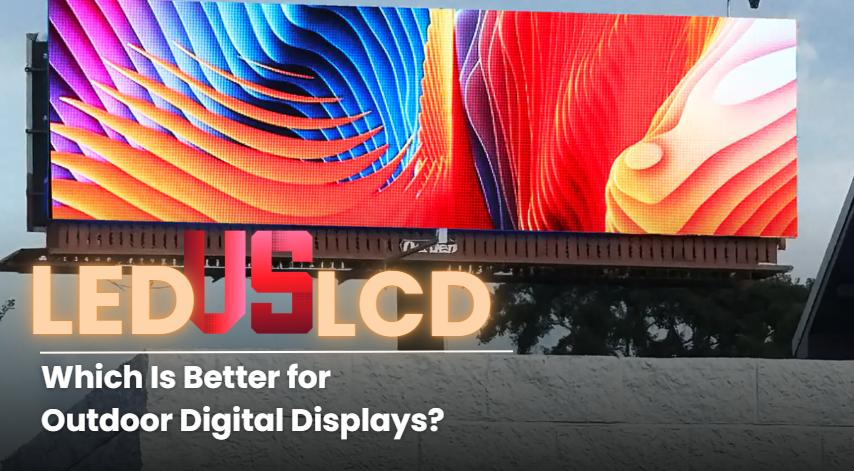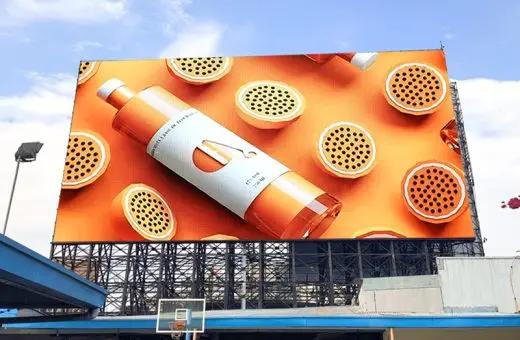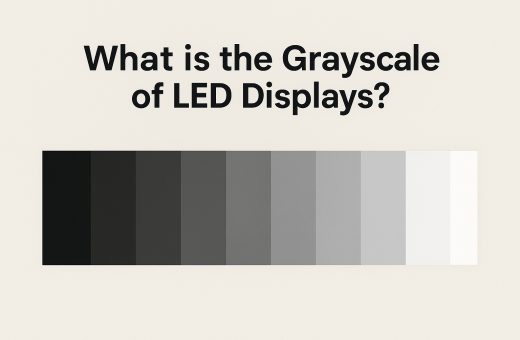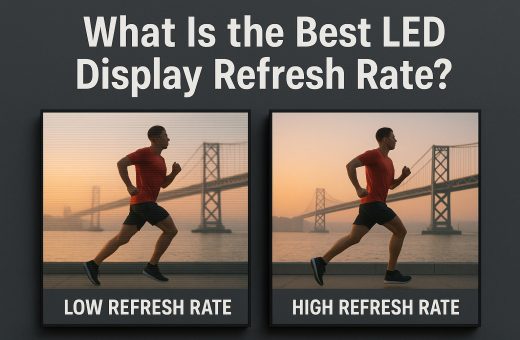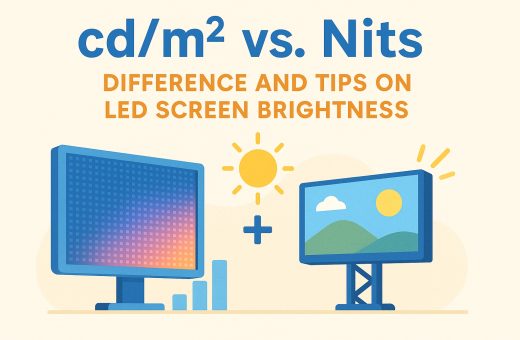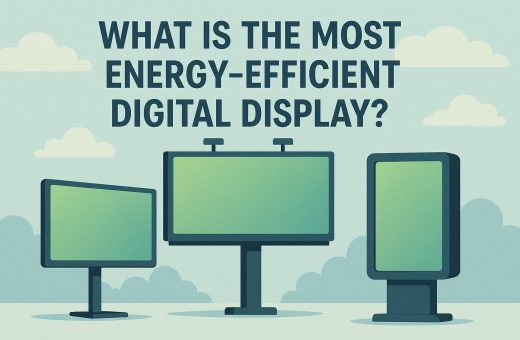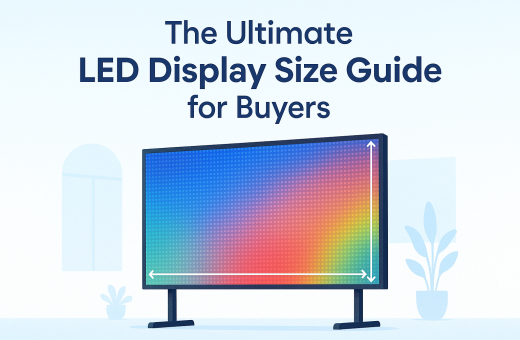Table of Contents
Outdoor digital displays are widely used in various settings, including transportation terminals, commercial plazas, storefront facades, and other public areas. As more spaces transition from printed signs to dynamic screens, many people face a practical decision: should they opt for an LED screen or an LCD screen for outdoor use? The wrong choice can result in reduced visibility, increased energy consumption, and suboptimal performance in demanding outdoor conditions.
Let’s explore what LEDs and LCDs are and which option is better for outdoor displays.
LED vs. LCD: What’s the Difference?
Here is a quick look at both LCD and LED one by one:
LCD (Liquid Crystal Display)
LCD stands for liquid crystal display and uses a flat panel with liquid crystals that control light passing through them. These crystals do not emit light and require a backlight to create visible images. The backlight shines through the crystal layer, which adjusts to form colors and images on the screen.
LED (Light Emitting Diode)
LED refers to a display that uses light-emitting diodes as its light source. These diodes produce their own light and form the image directly on the screen. The display does not need a separate backlight because the light is generated by the diodes themselves.
Key Comparison: Outdoor LED Screen or Outdoor LCD Screen?
Let’s see how LED and LCD outdoor digital displays differ:
Brightness and visibility
LED screens can perform in bright daylight without losing clarity or color strength. Their light output remains consistent even under direct sunlight, which makes them ideal for open-air locations. On the other hand, LCD screens depend heavily on backlighting, which can make it difficult to maintain clear visibility in bright outdoor environments where sunlight overwhelms the screen’s output.
Viewing angles and image quality
LCD screens offer excellent sharpness and color uniformity when viewed straight on, particularly at short distances. However, their image can begin to degrade when seen from the side, which limits their effectiveness in public outdoor spaces with wide foot traffic. LED screens maintain strong visibility from broader angles and greater distances, providing a more consistent experience for viewers who are not directly in front of the display.
Weather resistance and durability
LED outdoor digital displays are manufactured with weather-resistant casings and sealed components that handle moisture, dust, and temperature swings without external protection. This makes them reliable for long-term exposure to harsh environments. By contrast, LCD screens are not inherently built for outdoor use and must be placed within climate-controlled enclosures outdoors. Adding these enclosures also increases the overall cost of your outdoor digital display setup.
Energy efficiency and operational costs
LED technology is more efficient in large-scale outdoor digital displays because each diode emits light precisely where it is needed, which reduces unnecessary energy use. LCD panels rely on constant backlighting across the entire screen surface, drawing more power even when displaying dark or static content. Over time, the difference in energy consumption can result in significantly higher operational costs for LCD installations. LED systems also benefit from easier modular repairs, lowering long-term maintenance expenses.
Which to Choose: LED Display Screen or LCD Display Screen?
An LED screen for outdoor advertising is best suited for environments where visibility under sunlight, durability against outdoor conditions, and long viewing distances are essential. These include large-scale applications such as roadside billboards, public information boards, stadium signage, and open-air commercial displays. Their ability to remain clear in full daylight, combined with their resistance to temperature changes and environmental exposure, makes them a reliable option for continuous outdoor use.
LCD display screens are more appropriate for smaller installations in controlled or partially protected outdoor settings. They perform well in areas where viewers stand close to the screen and where you prefer sharp image delivery over high brightness. Use cases include digital menu boards under awnings, interactive kiosks, and storefront displays placed behind glass or in sheltered corridors. While they offer strong visual performance at short range, their limited weather resilience and dependence on enclosures make them less viable for fully exposed outdoor environments.
Chainzone Recommendation
Chainzone manufactures top-quality LED outdoor digital displays that are built for tough environments and practical demands. Our systems have proven their reliability in various outdoor environments, including highways, stadiums, outdoor shops, and public spaces that face wind, rain, sun, and extended periods of operation.
We offer a wide range of pixel pitch options and design formats that can be matched to specific viewing distances, screen sizes, and site conditions. The visual performance holds up even in direct sunlight, and their structural design allows for fast installation.
Our outdoor LED advertising screens are designed to remain visible in strong sunlight, withstand damage from water and dust, and maintain consistent performance throughout the seasons. We design our systems to make maintenance straightforward and fast so operators do not lose time or revenue to extended repairs.
Wrapping-Up
LED displays are the better choice for most outdoor environments due to their brightness, durability, and long-term efficiency. At Chainzone, we design our systems to meet the real demands of operating in outdoor environments, ensuring they remain reliable even in extreme conditions.

